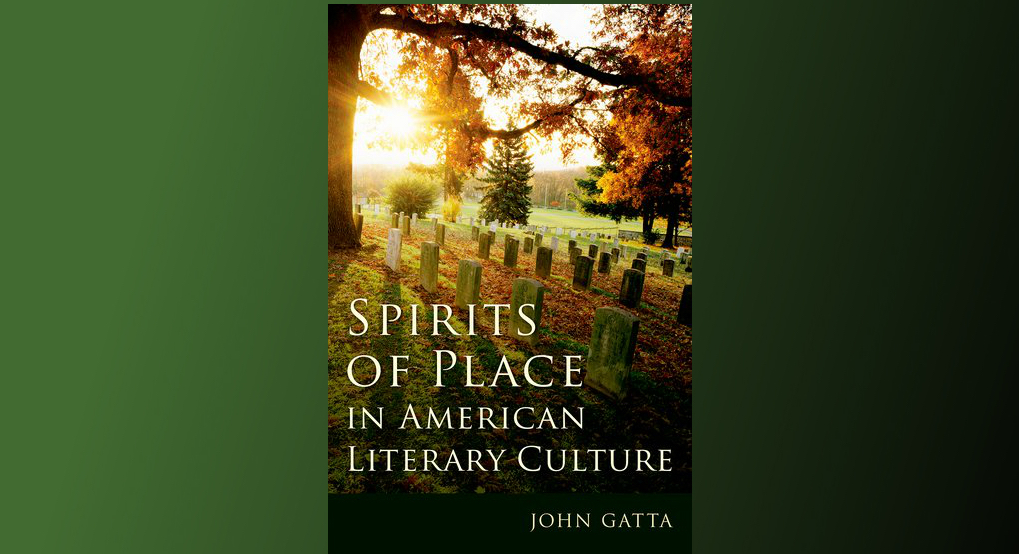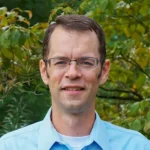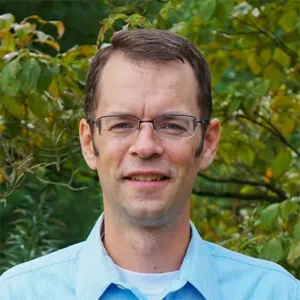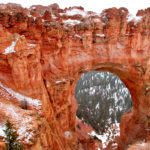John Gatta is the William B. Kenan Jr. Professor of English at Sewanee: The University of the South. He’s the author of several excellent books, including Making Nature Sacred: Literature, Religion, and Environment in America from the Puritans to the Present and The Transfiguration of Christ and Creation. His new book, Spirits of Place in American Literary Culture, draws on several American authors to explore the many ways that humans inhabit places and experience them as sacred. He considers not just the obvious writers of place, people like John Muir in Yosemite and Wendell Berry on his Kentucky farm, but also Abraham Lincoln on the fields of Gettysburg or Dorothy Day in Manhattan and James Baldwin in Harlem. Unusually for a book of literary scholarship, his concluding chapter takes a more practical turn and looks at ways that universities might help their students pay more attention to their places. Gatta’s study suggests that places can be sacramental, means of grace by which humans come to realize their membership in creation. I trust the conversation below will provoke you to read his book yourself.
Jeff Bilbro: To what extent is the sacredness of a place imagined or created by humans, and to what extent is it discovered or received as a gift, as “Something you somehow haven’t to deserve,” in the words of Robert Frost’s character Mary?
John Gatta: Surely both elements—our subjective vision and recognition of the site’s objective materiality—must be involved, though I would be hard put to indicate anything like the relative proportions of these two. Perhaps Wordsworth’s poetic reminder that we “half create what we perceive” of the world in general also captures something of how we might honor the sacred dimensions of any site on earth.
But I think the key point about sensing the charge of God’s grandeur anywhere at all is, as your question implies, grateful recognition of the giftedness of creation, in the face of a wondrous universe that didn’t ever have to exist in the first place. It’s telling in this regard that Arnold Benz, a noted Swiss astrophysicist and close friend of mine, chose to title one of his science-and-religion monographs, via English translation of his German original, “The Given Universe” (Da Geschenkte Universum: Astrophysik und Schöpfung). The multi-layered import of that locution—concerning a given universe, with its overtones of giftedness–strikes me as wonderfully provocative.
Particularly for features or sites centered in the built environment, discerning their giftedness and grace can also stir our cognizance of what has been bequeathed to us by human forebears. So for me there’s a beauty and holiness available in pondering, for example, the care with which the home I now inhabit in Tennessee had been constructed in the late nineteenth century, by some who had served in and survived the Civil War. I’ve often felt a communion of heart, too, with those who built the colonial-era farmhouse—dating from 1732–where I once lived for years in Connecticut. What these stalwart New Englanders built was evidently meant to last, a gift for others well beyond their own lifetime.
JB: In “How to Be a Poet,” Wendell Berry writes “There are no unsacred places; / there are only sacred places / and desecrated places.” How might we cultivate an earthy imagination, one that recognizes and honors the sacredness of the places we inhabit?
JG: Yes, there’s an element of truth in such globalizing statements—in the one you cite from Berry, or in Blake’s famed assurance, “Everything that lives is holy”—but not, as I see it, the whole truth. True, we’re assured from biblical testimony in Genesis and otherwise that “in the beginning” what God created everywhere was “very good”—that is, blessed, prepared in potentia for humans thenceforth to honor it as sacred. So when Harriet Beecher Stowe in Uncle Tom’s Cabin describes Simon Legree’s slave plantation as cursed ground, one of the “dark places of the earth,” we’re doubtless to suppose that it had not been made so originally but later became so, through its perverted use by sinful humanity.
Yet many of us, myself included, risk overusing the word “sacred” to cover most everything everywhere. Anthropologists and cultural-religious historians remind us that traditional usage should discourage us from regarding “sacred space” as an honorific applicable everywhere on earth. It instead identifies special sites, places somehow set apart from ordinary life—in biblical terms, some version of “bethel.”
So while Jewish and Christian theology classically affirms that God exists everywhere, essentially unbounded by space or time, that theology also, and paradoxically, recognizes certain gradations of divine presence among any spaces we might have in mind. For Jews, therefore, Jerusalem and the land of Israel have long been honored as more sacred than other lands on earth. And for Christians, God’s incarnate presence in the Christ, the earthly and mystical body of Jesus of Nazareth, or though practice of the Holy Eucharist, has always been understood as a decidedly concentrated or elevated mode of presence.
How to apply this notion of gradations in sacred intensity and presence to present-day landscapes or structures is more problematic, of course. But I think that learning all we can about the natural and human history of a given place, and schooling ourselves in whatever ways it has already been storied by others either orally or through inscription, is one promising way to begin honoring that place. And there’s no denying that some place-attached stories or histories carry more force for us than others, depending on our own personal history and culture.
JB: While your book explores ways in which people have valued particular places, you are also careful to point out the dangers of making any one place into an idol. Which do you think is the greater danger in America today—idolizing place or disregarding it—and how might we avoid both errors?
JG: Because of the electronically abstracted environment and nomadic zeitgeist that now permeate almost every aspect of our culture, I’d suppose that we’re today more inclined to undervalue than to idolize place-rootedness. But I most appreciate your larger question: How might we avoid either idolizing or minimizing our relations to physical place? And how might the same corrective principles apply to both?
Two principles I’d see as germane to the matter involve practicality and sacramentality. First, in practical terms I think we’d do well to recall (as I often must remind myself) that “nature,” or place-attachment more generally, pertains not so much to those exotic scenes elsewhere we’re drawn to observe or visit, but to the familiar ground upon which we live, move, work, and have our being. As you know, Jeff, Wendell Berry in his multi-genre writing has dramatized as well as anyone else for our time the point that “nature”—above all, his farm in Henry County, Kentucky—is no prettified refuge outside himself but a setting inseparable from his home. It’s the essential locus of his work, rest, and livelihood. It’s a hallowed place because of, not despite, its personal familiarity as living space.
The theological principle of sacramentily also strikes me as highly germane to this issue. For Christians, sacraments have long been understood as outward and visible signs of inward and spiritual grace. They are vehicles of holiness, insofar as they serve to connect us to a divine reality, but never meant to be worshipped in themselves. They are godly but not God. So I believe this principle of sacramentality, while centered in Christianity’s chief sacraments of baptism and the Eucharist, extends as well to what David Brown has called the “sacramentality of place.” And as I’ve discussed in the book, even a non-Christian writer like Thoreau can clearly be disposed to interpret rituals related to his domicile and the pond at Walden as “sacraments.”
JB: How might you distinguish the mobility of a Stegnerian “boomer” from the life of someone like Gary Snyder who has moved around but, for much of his life, has worked to become native to his place?
JG: As is true of our relation to other human beings, the ethic of our relation to various places has more to do, I think, with how we approach them than with how much time we spend at each of them, or how many of them we frequent in the course of a lifetime. What crucially defines a “boomer” I think, both for Stegner and for Berry after him, is an exploitative mindset. “Boomers” define themselves mainly by their insatiably acquisitive appetites, their urge to “get” as much as possible (in mostly material terms) from each site they enter while “giving” nothing in return. Such a mindset is epitomized by agricultural practices that treat soil as mere commodity, declining to sustain its fertility toward futurity and on behalf of others. It sets soil on temporary life support by purely chemical means, for the sake of short-term profit.
“Stickers,” unlike “boomers,” are those who recognize, in accord with Aldo Leopold’s language, that land should not be regarded solely as resource or commodity but rather as a community to which they and others aspire to belong. “Stickers” may not abide anywhere for a lifetime but enter each place they visit or abide with reverence, full attentiveness, and charity toward those who will follow them. I think Barry Lopez, a writer who has lived in or visited countless places around the globe, beautifully describes how a soul might enter reverently into any new space of awareness, aspiring to learn in the process just how human and non-human “natives” of that place had once understood and made a home for themselves there.
JB: You quote from the end of Kathleen Norris’s book Dakota where she writes, “Maybe the desert wisdom of the Dakotas can teach us to love anyway, to love what is dying, in the face of death, and not pretend that things are other than they are.” Many places in America—from rustbelt towns to rural communities to decaying suburbs—do feel like they are dying. What might love for these places look like?
JG: Yes. Even here in America there are places haunted in human terms by ugliness and near-despair, by economic failure or nostalgia for the more vibrant communal experience of former days. I’d not wish to romanticize such places, having resided myself at one time or another in some pretty unglamorous rustbelt towns such as Jersey City or Hammond, Indiana. Schenectady, New York, my birthplace, was once the corporate headquarters of General Electric, thereby employing many thousands of resident workers who back in the day received pensions and enjoyed reasonable job security. That small city still struggles today to define its role within America’s post-industrial order. The New York Times recently ran an editorial suggesting that new attempts to replace failing agricultural venues or extractive forms of employment in towns throughout rural America have thus far seen scant success.
Of course it’s not the places themselves that are dying but those forms of human presence and activity that once seemed to have enlivened them. Granted, there’s no simple, universally applicable remedy for such ills. Yet a modest share of “love for these places” does become possible, I think, to the extent that they become storied places—that is, insofar as one can recover or create relevant narratives about their distinctive character. As I discuss in the book, such has been the case for postwar Harlem, a community we discover through James Baldwin’s writing to have been for African Americans at once tough, often demeaning but also memorable, fascinating, vitally seminal. Much the same is true of Alfred Kazin’s account of growing up in a now-defunct Jewish neighborhood of Brownsville in Brooklyn, New York. So I think it fair to say that literature can not only portray a place, through descriptive evocation, but can also help in some measure to create or recover its godly potential for the benefit of us all.






